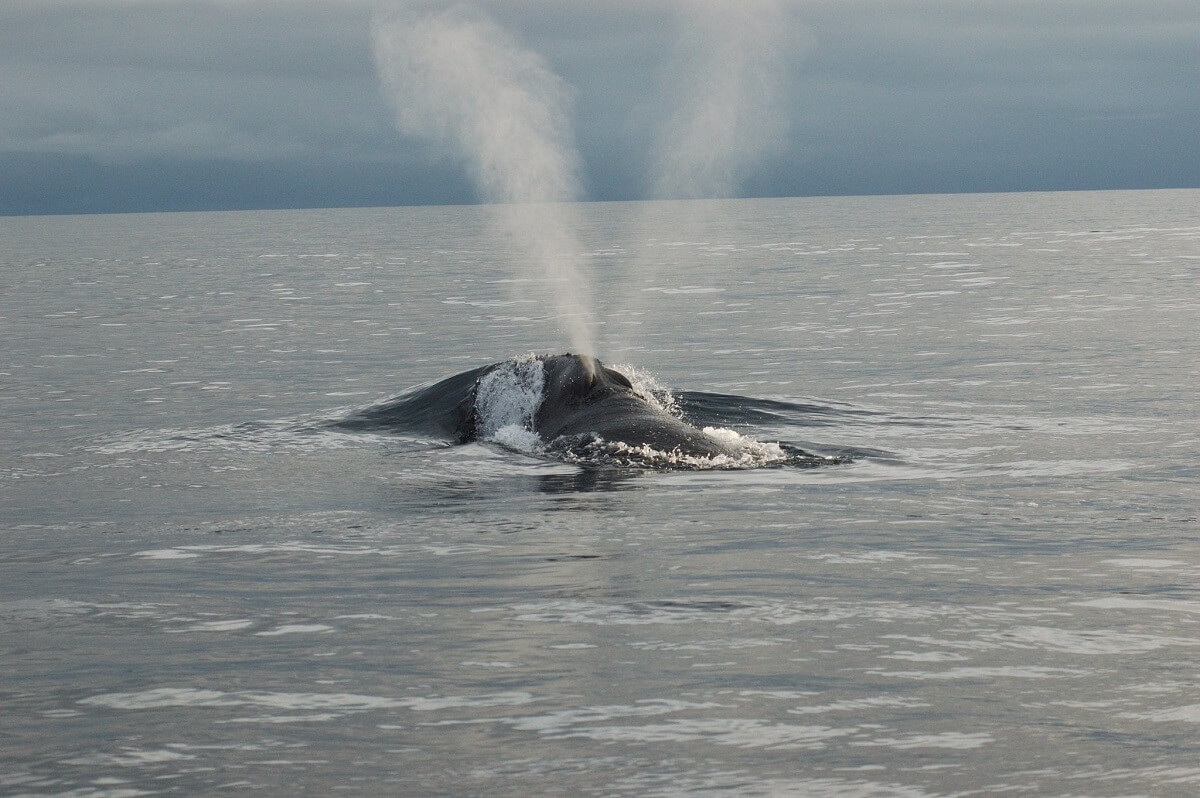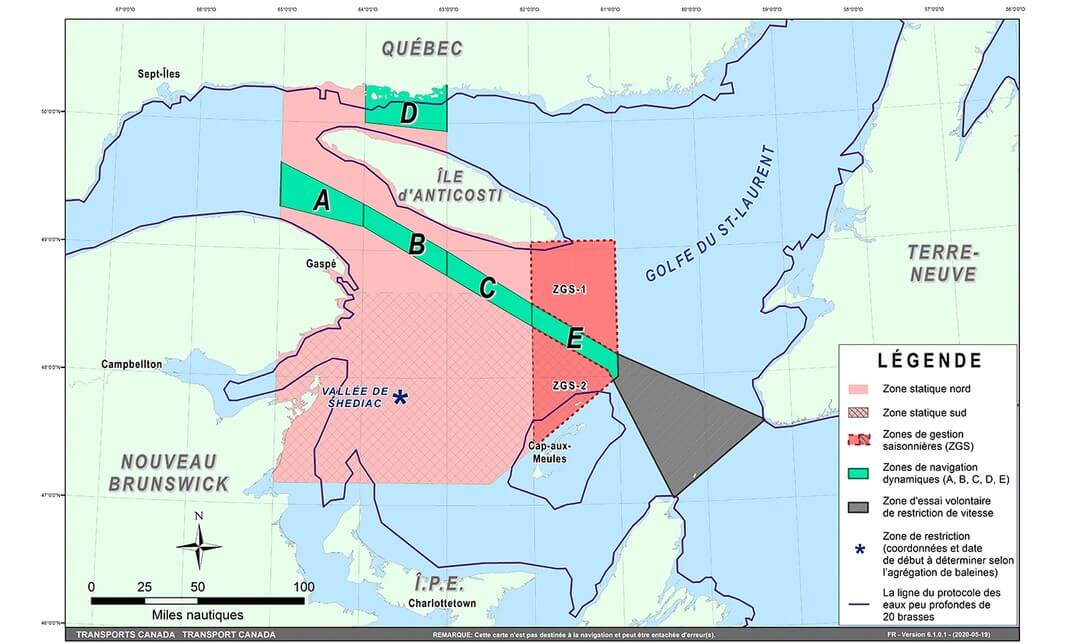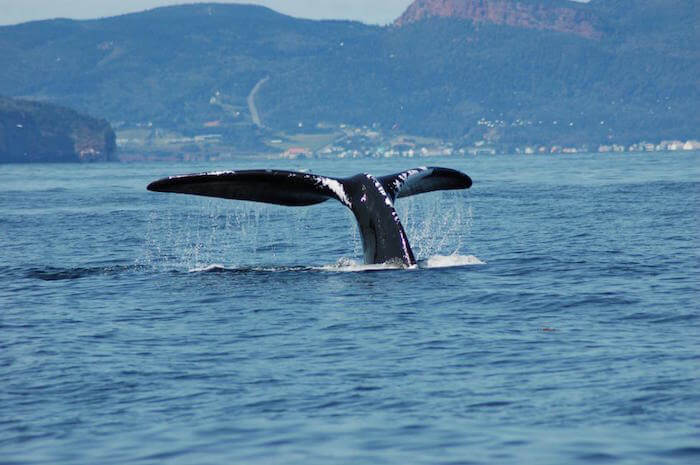Since the start of the year, news concerning protection measures specific to North Atlantic right whales has been like a roller coaster, alternating between hope, success, disappointment and difficulties. This “urban whale”, which migrates along the US and Canadian coasts, and of which only 400 individuals remain in the world, poses a genuine conservation challenge in terms of its coexistence with the fishing and shipping industries.
In the United States, a first North Atlantic Right Whale carcass was found on june 25th. It will be analyzed and it is too early to know cause of death yet. However, preliminary observations show a number of wounds along the head and body of the whale that are consistent with a vessel collision.
What’s up with the right whales? What are the good and less good news?
☺ No carcasses found in Canadian waters
In the Gulf of St. Lawrence, new dynamic protection measures were put in place in early 2020. Since their arrival in the Gulf on May 4, North Atlantic right whales have been under close surveillance. No fewer than 92 visual observations have been recorded. To date, this has resulted in the complete closure of 58 fishing grids (which represents approximately 13,000 km² of seabed) until the end of the season. About twenty other fishing areas are also subject to partial or temporary closure.
At the present moment, no North Atlantic right whale carcasses have yet been reported in the canadian side. Is this the result of this new approach?
☹ Fishermen under pressure
Unfortunately, fishing zone closures, even if they are dynamic, create additional work and generate significant costs for the fishing industry. Some organizations are concerned. Under pressure, fishermen may be tempted to not report the presence of a North Atlantic right whale, a carcass or an entanglement in a given fishing area, even if they are legally required to do so. However, their collaboration remains essential for whale protection organizations.
☺ Whales tallied from space
How can we improve North Atlantic right whale surveillance and monitoring? How can we better understand their habits and identify their preferred sectors in order to better protect them? The challenge is enormous and the solutions, well, just might be found by looking to the sky.
On May 20, the Canadian Space Agency released a rather surprising tender in search of innovative space solutions for the surveillance and protection of the North Atlantic right whale. Called SmartWhales, this initiative is supported by $5.4M in funding and could allow scientists to realize a long-standing dream : to be able to count whales from space.
☹ Lack of compliance with voluntary speed limits!
Besides entanglement, the greatest cause of mortality of North Atlantic right whales remains collisions with ships. However, cruising speeds represent a critical issue which helps limit mortality (articles in French). For this reason, Transport Canada has developed a set of measures to limit the speed of watercraft in the St. Lawrence. Some areas are subject to fixed speed limits, some are imposed a limit only when the species is present, while other sectors have voluntary slowdown measures.
In Cabot Strait, the main entryway into the Gulf of St. Lawrence for right whales, it is therefore recommended to voluntarily limit one’s speed to 10 knots. Unfortunately, in early June, the organization Oceana Canada warned that this limit was often being ignored.
“[…] Between May 19 and 25, 2020, the vast majority of vessels, i.e. 72%, did not comply with the voluntary slowdown to 10 knots. […] The highest speed observed, 21.1 knots, was that of a Canadian freighter,” noted the press release. “In an industry where speed is often a competitive advantage, we are concerned that a voluntary slowdown will deter ship operators from complying with the speed limit and give an unfair advantage to those who do not – some of them are travelling at almost twice the recommended speed,” explained Oceana Canada campaign manager Kim Elmslie.
☺ Funds for research
In the United States, the year had started well for North Atlantic right whales. Under the Species Recovery Grant Program of the National Administration of Oceans and Atmosphere (NOAA), several hundred thousand dollars were being spent this year to help this endangered species. The study seeks to understand and model right whale entanglements in fishing gear. In this regard, the State of Maine is emphasizing its desire to identify concrete solutions to reconcile the presence of whales and lobster fishing, a major industry in the region.
☹ A migration corridor opens to fishing
In a dramatic turn of events, on June 5, during a meeting with representatives of Maine’s fishing industry, US President Donald Trump proclaims that the Northeast Canyons and Seamounts Marine National Monument, a marine reserve spanning nearly 8,000 km² in the Atlantic Ocean off Cape Cod, would reopen to commercial fishing. The announcement caused an uproar amongst environmental organizations. With its unique ecosystem, this area notably represents a migration corridor for right whales, worries the New England Aquarium.









